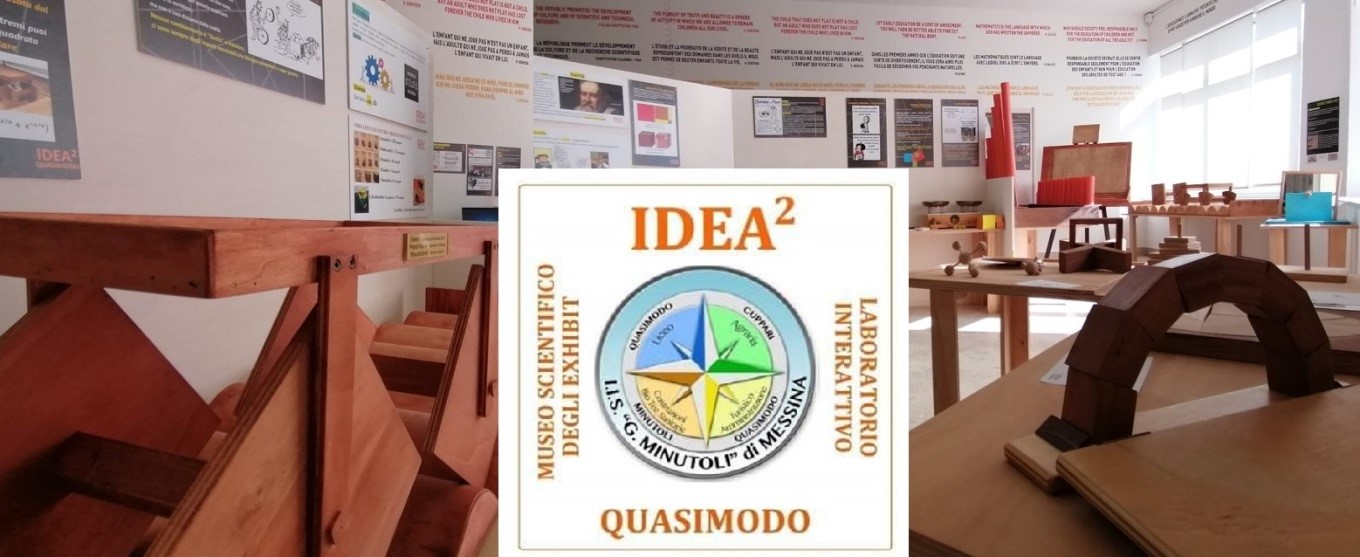A project curated by Salvatore D’Arrigo
Even if in schools many scientific concepts have always been introduced separately from mathematical ones for a necessary simplification, the MIUR indicates among its guidelines the need to further strengthen an interdisciplinary approach to facilitate not only the learning of natural phenomena, which are inevitably complex, but to transform the study into an exciting, more critical and creative discovery.
In particular, starting from primary school, disciplines such as Physics and Mathematics can be considered permeable, expandable, transferable, presenting deeply interconnected areas of laboratory activity.
The Exhibit, La Scienza Divertente project is developed on this premise, which leverages constructive and motivated learning, enhances multiple intelligences (Howard Gardner), has methodological roots in Montessori teaching and Froebelian games.
The central element of this educational model is the exhibit, an interactive installation aimed at involving the public in an educational-scientific experience, which has “found a home” over the decades in numerous Science Centers around the world, within of which the fundamental rule is FORBIDDEN NOT TO TOUCH.
As part of the Exhibit, La Scienza Divertente project, the find is initially created as a prototype with poor material, and is imagined, designed, built often by the participants in the laboratory experience themselves, to then be tested “in the field” by its “players”, as a representative model of the scientific phenomenon: each experiment invites us to try and try again, questions and suggests possible answers, creates stimulus for continuous reflections.
A specific application sector of the project is intended for the construction of small mathematical models and physics experiments using the origami technique, the art of folding paper, in which everyone discovers that they are “differently capable”.
The Exhibit, La Scienza Divertente project aims to contribute to the dissemination of scientific culture through multiple training and dissemination activities in order to:
- create a positive emotional imprint on science in children and young people and, at the same time, recover the lost or inexperienced imprinting of adults
- strengthen the teaching of mathematics and physics in schools of all levels
- stimulate citizens’ interest in the problems of scientific research and experimentation
- promote inclusion processes for vulnerable individuals and disabled people
Prof. Salvatore D’Arrigo, involved in the project for almost forty years, has experimented it in multiple realities – schools, universities, recovery centers, public bodies, cultural associations, etc. – declining it from time to time within a wide range of activities:
- Play-educational workshops for primary and secondary school students
- Refresher courses for university students and teachers of all levels
- Consultancy for the planning and implementation of exhibition events aimed at disseminating scientific culture
- Seminars and conferences (in person and remotely)
- Design and construction of exhibitions
He also designed and worked as a team on the creation of two permanent interactive spaces:
- MUSEO IDEA the village of San Marco d’Alunzio, created as part of the project to expand cultural tourism within the Nebrodi Park: the structure is dedicated in particular to the scientific culture of Magna Graecia of Pythagoras and Archimedes. A 200 m2 space on the first floor of the Renaissance Palazzo Grimaldi hosts 20 interactive wooden installations together with 40 educational panels that make the visitor autonomous in interacting with the experiments through the three fundamental phases of WHAT TO DO – WHAT TO NOTE – WHAT HAPPENS. To embellish the exhibition, around 100 pieces of modular origami, including constructions of Platonic solids and, suspended in each room, polychrome mobile structures created by folding more than a thousand sheets of paper

- MUSEO IDEA2 in the Liceo Scientifico S. Quasimodo di Messina: the exhibition space, also open to local schools and the public, is configured as an interdisciplinary educational laboratory of Mathematics and Physics, the nucleus of a training contract in which the student builds scientific skills but not only that – they can be used in interpersonal relationships. Students and visitors have around 30 exhibits at their disposal, most made of wood. The environment is accompanied by murals, quotes from philosophers and scientists that ironically encourage critical thinking in a multidisciplinary path and by 50 educational panels to support the paths on display, some of which report the etymological origins of many words relating to scientific education .

